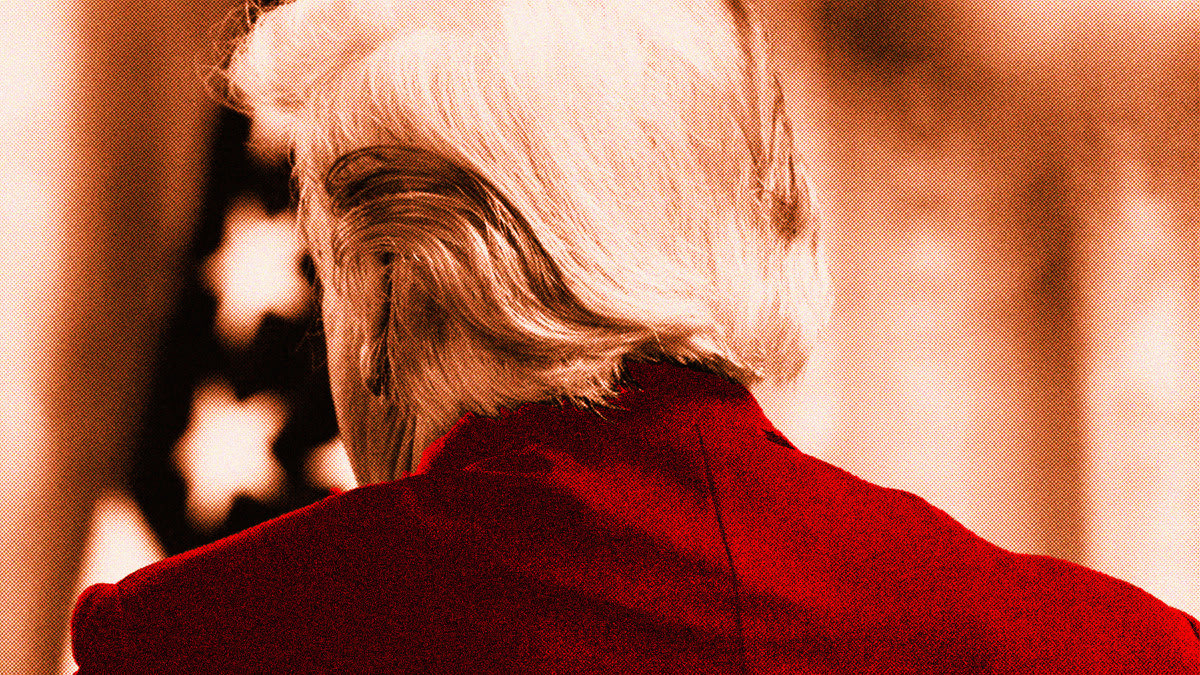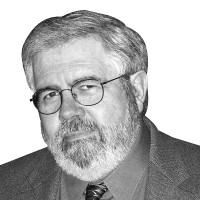The conventional wisdom after the two major populist revolts of 2016—the United Kingdom’s referendum vote to leave the European Union and the election of Donald Trump as U.S. president—was that few, if any, of their respective supporters would have a change of heart. Contrary to the classic understanding of populism as an ephemeral protest, this view insisted, the votes for Brexit and for Trump reflected a profound and enduring clash over identity.
Six years later, the argument looks less convincing. In America’s recent midterm elections, Trump Republicans clearly underperformed, and in Britain, public regret over Brexit—or “Bregret”—is emerging as a major theme in politics and national life. As the U.K. is engulfed by a wave of strikes by ambulance workers, nurses, railway workers, and others that has been dubbed a new “winter of discontent,” a larger disaffection has come into view
When Britons are asked whether they think the vote for Brexit—a slim 52–48 majority—was right or wrong, the share of those who say it was wrong has climbed to a record high of 56 percent, while the share that says it was the right decision has fallen below a third of those polled. Considering the relative stability of Brexit enthusiasm after the landslide Conservative election win in December 2019, when Boris Johnson triumphed with the promise to “get Brexit done,” the recent decline in approval for leaving Europe is stark. Believing in Brexit has become a minority pursuit.
Ask voters how they think Brexit is being managed, and about two-thirds now say badly. Ask them how they think Brexit has gone, and only one in five says well; close to two-thirds say not well. And ask them how the reality of Brexit compares with their expectations of it, and seven in 10 now say that it has gone either as badly as they expected or worse than they expected. Je ne Bregrette rien? Not so much.
This creeping sense of Bregret helps explain why the British have also become more supportive of what is still unsayable by political leaders at Westminster: that the country should consider rejoining the EU. Neither of Britain’s two major parties supports this, and neither is committed to offering what would be the country’s third referendum on European membership, after 1975 and 2016. But if you ask people today how they would vote at such a referendum, an average of 57 percent say they would vote to rejoin. In the past year alone, there has been a 10-point swing toward rejoining the EU.
Read: The never-ending Brexit crisis
What explains this change of heart? The first factor is the sheer pressure of the demographic shifts sweeping through Britain’s electorate. In much the same way that the 2016 result caught the establishment off guard, the divides submerged beneath the opinion surveys suggest that some big shocks to the status quo are coming once again.
The mood is changing not simply because some of Britain’s Leave voters have morphed into Rejoiners—the number of actual converts is modest. Fewer than one in five Brexiteers admit to buyer’s remorse. Far more significant is the fact that people who chose not to vote in the original referendum, and young people who were too young to vote in 2016 but are now flooding into the electorate, are heavily against Brexit.
Of the 18-to-24-year-olds of Generation Z, who came of age during the populist turmoil marked by the rise of Trump in the U.S. and Johnson in the U.K., as well as the prolonged and polarizing gridlock over Brexit in Parliament, no less than 79 percent say they would vote to rejoin the EU. (This is a view shared by only 24 percent of the oldest Britons.) For these Zoomers, only 2 percent of whom plan to vote Tory at the next election, this opposition to Brexit is just one aspect of an emerging progressive identity, which also includes a strong emphasis on climate change and social justice, as well as support for immigration, greater diversity, and more assertive anti-racism.
Similarly to their Gen Z counterparts in Scotland, 73 percent of whom back the call of the Scottish Nationalist first minister, Nicola Sturgeon, to leave the U.K. and rejoin the EU, Zoomers elsewhere in the U.K. seem convinced that Brexit was a historic mistake. And according to the latest YouGov polling, a majority of every age group under 65 in the U.K. now thinks this way.
Bregret is also being stoked by voters’ shifting assessments of its costs and benefits. The original vote for Brexit was powered by a belief that leaving the EU would enable Britain to reclaim sovereignty from Brussels, lower immigration, and, per the Leave campaign slogan, “Take back control” of the country’s borders and security. But since the referendum, voters have seen Brexit become enmeshed in a succession of crises. Even if Brexit was not their main cause, the blunt reality is that it has become the blameworthy backdrop to the post-pandemic economic malaise of low growth, rampant inflation, and cost-of-living misery.
Read: For Britain’s Tories, the answer is always Margaret Thatcher
Instead of paving the way for a dynamic high-growth, low-tax economy—in the most boosterish version promised by Leave’s promoters, Britain reborn as “Davos-on-Thames”—Brexit is now associated by many with the opposite: a low-growth, high-tax economy. Worse, the country is laden with debt, its industry is stuck in a cycle of low productivity, and its borders are overwhelmed by unchecked immigration. Britons are about to witness the sharpest fall in living standards on record, and their economy is forecast to fall behind those of most major world powers.
Britain’s status as the “sick man of Europe” in the 1960s and ’70s was what originally helped persuade the country to join with Europe. If the U.K. continues to lag behind its competitors, this “benchmarking effect” of invidious comparison will only strengthen Bregret in the years ahead. That effect is already clear. Brexiteers will argue that quitting Europe was never really about the economy but about sovereignty and identity. This was certainly true in 2016—but in 2022, the economic downturn is undercutting support for their cause.
According to my colleague Sir John Curtice, voters have not, in the main, become more positive about what they see as the main benefits of Brexit—such as Britain’s success in developing its own COVID-19-vaccine program, and its ability to control its own affairs and respond decisively to the Ukraine crisis—but they have become gloomier about what they see as its drawbacks. Contrary to their attitude a year ago, they have become more convinced that Brexit is damaging their wages, the national economy, and the National Health Service.
The Tory government’s disastrous experiment with “Trussonomics,” Liz Truss’s radical economic project during her 44-day tenure as prime minister, has not helped. Although her neo-Thatcherite “Liberal Leaver” vision of Brexit Britain—boosting bonuses for bankers, deregulating financial services, slashing taxes for top earners, and liberalizing immigration from outside Europe—united Tory elites and their donor class, it did not appeal to most ordinary Brexit voters.
Read: The Liz Truss travesty becomes Britain’s humiliation
Had you asked these voters, in 2016, why they voted to leave the EU, few would have told you it was because they wanted to deregulate the financial sector, see net migration surge to more than 500,000 a year, featherbed high earners, and have the government lose control of Britain’s borders (more than 44,000 migrants and asylum seekers arrived this year in small boats from France).
Few of the blue-collar, non-college-educated, and older voters who flocked to the Conservatives after 2016 want to realize the Davos class’s dream of a finance-led economic powerhouse centered on London. The growing gulf between how Conservative elites view Brexit and how the working-class voters they won away from the Labour Party in 2019 see Brexit is also stoking Bregret. Many of those voters have been disappointed by a Tory Party they see as showing scant regard for them. Since Johnson’s emphatic election victory three years ago, his party’s support among Brexit voters has crashed by some 30 points.
Read: What is the point of Boris Johnson?
The loss of these formerly pro-Brexit voters creates a profound challenge for the Conservatives, who have completely remolded their party around one side of the Brexit divide while alienating much of the rest of the country. What began as a master class in how a center-right party can tap into a major political realignment has turned into a cautionary tale about how a governing party can alienate its own voters. The Tories’ mismanagement of Brexit and their hemorrhaging electoral support are setting the stage for a return of what the referendum in 2016 was designed to eliminate: national populism
Johnson’s initial success was partly rooted in winning over three-quarters of the people who had previously backed Britain’s populist in chief and Trump ally, Nigel Farage. But today, the Conservative government’s failure to curb immigration, control Britain’s borders, and improve the lives of non-London-dwelling Brexiteers is creating space for another populist revolt in British politics.
Read: The rise and fall of Steve Bannon and Nigel Farage
In recent weeks, Reform, a party aligned with Farage, has been creeping up in the polls to 9 percent—a level of support for a rival third party that would guarantee the Tories lose the next general election. Many more 2019 Tory voters are telling pollsters that they don’t know whom to support or prefer “none of the above”—this leaves them once again susceptible to a plausible demagogue like Farage.
Whether they identified with the right or the left, many Britons could at least agree that Brexit’s seeming resolution had killed off populism. But as disillusion grows with what getting Brexit done has meant, the assumption that Britain’s populist spasm has passed no longer looks so certain.
:quality(70)/cloudfront-eu-central-1.images.arcpublishing.com/thenational/7B2D64K57EF266A65LWNUM3JQ4.jpg)



 Democrat Katie Hobbs, then Arizona’s secretary of state, spoke at a Women’s March rally in support of abortion rights last October in Phoenix. Ms. Hobbs was recently elected governor.
Democrat Katie Hobbs, then Arizona’s secretary of state, spoke at a Women’s March rally in support of abortion rights last October in Phoenix. Ms. Hobbs was recently elected governor.











